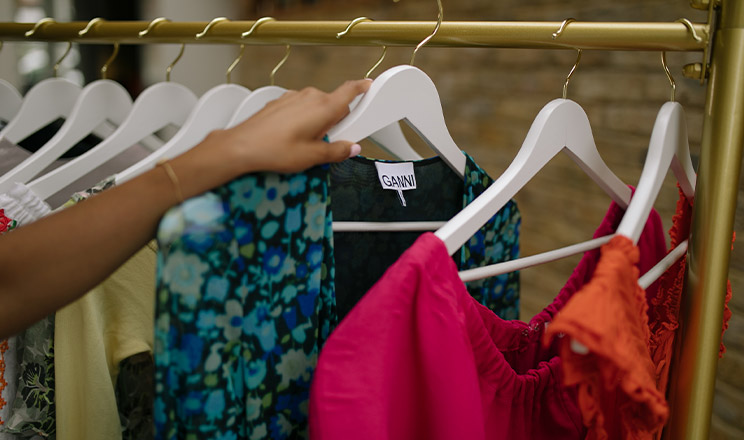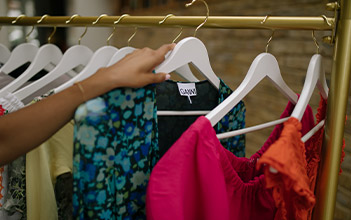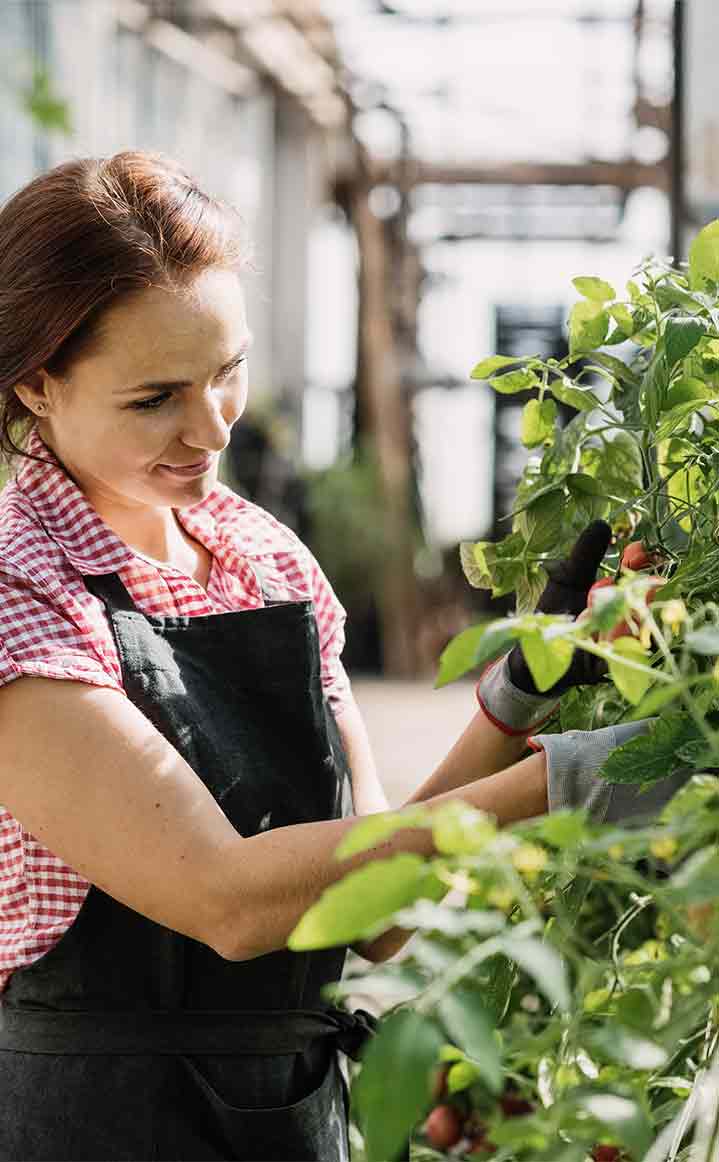Wearing it well: 10 ways to make your wardrobe more sustainable
The way we choose to consume fashion impacts the global environment, but there are some simple steps you can take to help reduce the environmental impact of your fashion choices and wardrobe and take action for climate.




The fashion industry is responsible for around 10% of the world's greenhouse gas emissions and almost 20% of its waste water1 — and the UK sends an estimated £140 million worth of clothes to landfill every year2.
It's easy to think that there's nothing we, as consumers, can do to help. But the way we shop, wear, clean and dispose of our clothes can have a major impact on the planet.
Here are 10 changes you can make to reduce your wardrobe's carbon footprint, helping you take action for climate.
1. Shop less, shop better
The single easiest way to cut the carbon cost of your clothes is to buy less in the first place. Experts recommend only buying pieces you'll wear at least 30 times3. That generally means opting for timeless and classic or distinctive and personal styles in good quality fabrics rather than flimsy, generic fast fashion.
2. Seek out alternatives to buying new
Clothes swapping, browsing charity shops and vintage stores, and shopping second-hand at sites like Depop and Preworn can help prevent the need to buy new clothes. Consider upcycling pieces that seem dated or having items that don't fit altered rather than disposing of them.
3. Rent for that special event
If you need a one-off outfit for a special event, why not consider renting? By choosing to rent an outfit from someone else, not only could you save money but it's also more sustainable than buying new: a circular fashion rental model brings environmental benefits as no new products are made or consumed.
Eshita Kabra-Davies, founder of By Rotation, a platform where people can lend and rent designer clothes, is an E.ON and Marie Claire Change Maker. Hear her take on how the fashion industry can transform.
4. Shop online or in-store — not both
Online and in-store shopping both carry carbon costs. Besides the obvious wastage in packaging and delivery, it's often cheaper for retailers to simply throw away returns from online shopping than return them into use4. But if you travel to try a pair of trainers in-store then buy them online from a cheaper outlet, you're racking up two sets of carbon costs for a single purchase.
5. If you shop online, consider longer delivery times
If you choose to shop online, make sure you choose longer delivery times and bundling purchases together as this means delivery companies can plot more fuel-efficient routes and make fewer journeys, and retailers can use less packaging. Both these elements help reduce the carbon cost of shopping.
6. Don't hoard clothes
Around 30% of what's in most people's wardrobes hasn't been worn for at least a year5. Donating pieces to charity, bringing them to a clothes swap, or selling them online puts them back into circulation rather than leaving them languishing in the wardrobe.
7. Choose more sustainable fabrics
Organic cotton is kinder to soil and wildlife and uses less energy and water than industrially farmed cotton. And recycled synthetic fabrics are better for the planet than virgin synthetic fabrics, which are based on fossil fuels. There’s also plenty of new developments in creating more environmentally friendly materials, using everything from algae to food waste.
E.ON and Wallpaper* Change Maker, Cassie Quinn’s regenerative fashion lab in London is exploring biomaterials to help reduce fashion industry waste.
8. Wash clothes less frequently
Washing clothes only when you need to wash them doesn't just cut your energy bills — it extends the lifespan of your outfits. Avoid tumble drying altogether, if possible. Even modern tumble dryers use a lot of energy and wear away the fabric of your clothes.
9. Filter microplastics
Synthetic clothes release a myriad of tiny microfibres into the water system with every wash, and they work their way back up the food chain into our bodies. Fitting a microplastics filter to your washing machine or using a washing bag like Guppyfriend can help reduce pollution.
10. Make, do and mend
It's easy to throw clothes straight into the recycling the second a hem comes loose. But brands including Patagonia and TOAST offer free repair services. Repair cafés can often fix up a seam, sew on a button or darn a hole, while Repair What You Wear has tutorials covering skills from threading a needle onwards.
Feeling inspired to take action for climate? Read one of our other blogs for more sustainable tips:
- Seven ways to help protect the environment
- Tips to help achieve a net zero home
- 10 tips for a low carbon lifestyle
Or check out our Change Maker hub for more inspirational stories from the people taking action for climate today.
Share to:
1. BBC: Can fashion ever be sustainable?
2. Wrap: Sustainable fashion and textiles
3. The Guardian: ‘Will you wear it 30 times? If not, don’t buy’: the experts’ guide to online shopping
4. The Guardian: Past the parcel: how the end of free returns will change the way we shop
5. Wrap: Love Your Clothes


Our blog
Read our latest blogs to discover how E.ON is leading the energy transition through smart and sustainable solutions.


Sustainable homes
Find out the many ways in which you can create a more sustainable home and reduce your carbon footprint.


Sustainable cities and communities
Find out how we're creating smart, sustainable cities and communities across the world.


Sustainable businesses
Find out how to turn your business into an industry leader for sustainability.


100% renewable electricity
We believe in a sustainable future, that's why we provide our customers' homes with electricity backed by 100% renewable sources including wind, biomass and solar, with a fixed tariff.


The advantages and disadvantages of solar energy
Solar energy can power our homes, businesses and communities. Discover the pros and cons of solar power and how it works to generate renewable energy.